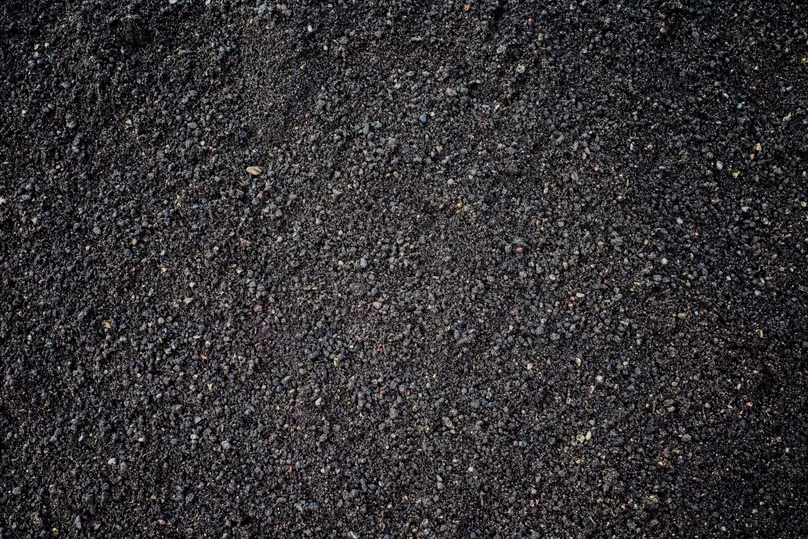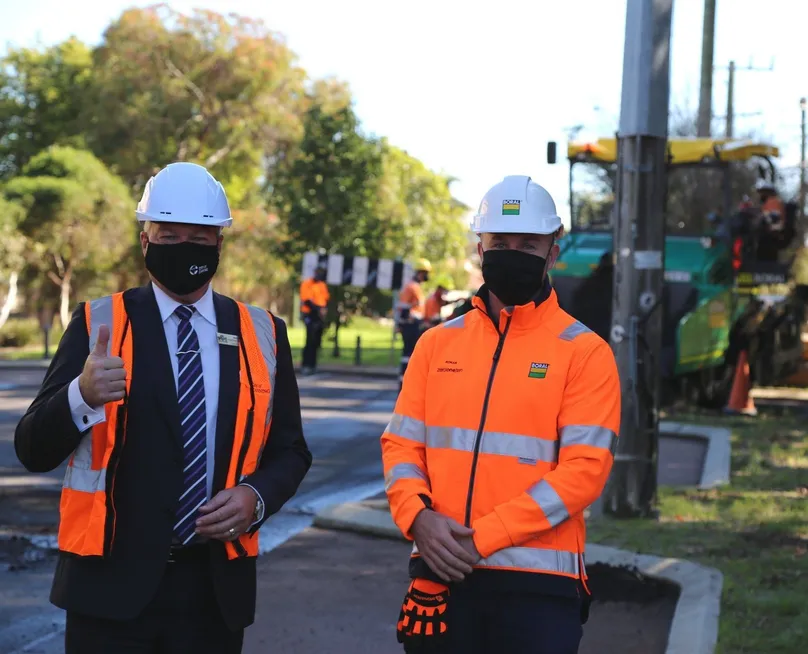Reclaimed asphalt pavement
Reclaimed asphalt pavement (RAP) is produced from milling existing asphalt surfaces or removal and crushing of the asphalt pavement once they have reached end-of-life requiring maintenance or rehabilitation.
Asphalt pavements are considered completely recyclable. RAP typically comprises of well-graded high-quality aggregates coated on bitumen.
How is it processed?
RAP is generated from the removal of the asphalt pavement from milling of the pavement surface and crushing of full-depth asphalt pavements.
Generally, old asphalt pavement is processed at plants through crushing, screening, conveying, and stacking.
Environmental, health, and safety
In terms of environmental, health and safety, there is no significant difference between RAP and virgin aggregates. Consideration is to be given where the asphalt mix contains an atypical mix composition.
Applications
RAP in Western Australian road infrastructure has been implemented in:
- asphalt, with up to 10% by mass depending on the application and laye
- the use of RAP in wearing course, stone mastic and open graded asphalt is not permitted
- MRWA permits the use of high RAP content following ERN 13 - unbound granular layer (RAP content greater than 15% is used around Australia, though it may require some mix design adjustments to be made)
Specifications
Main Roads Western Australia (MRWA) currently has specifications for the use of RAP in a number of products, such as:
- Specification 501 for Pavements
- specification 510 for Asphalt Intermediate Course
- Specification 511 for Materials for Bituminous Treatments
The Public Transport Authority outlines its requirements for pavements in:
- 8880-450-067: Specification - Roads, Busways and Paths
- 8880-400-003: Specification - Bituminous Surfacing in the Rail Reserve
Benefits and Challenges
RAP has been used in road infrastructure to improve the environmental benefits by reducing the use of virgin aggregates and bitumen, greenhouse gas emissions and amount of material sent to landfill.
The overall implementation of RAP has been reported to decrease overall material costs from reducing the need for virgin aggregates and bitumen.
Additionally, comparable pavement performance has been observed with the addition of 15-20% RAP into asphalt mix, with little raveling, fatigue cracking, rutting and weathering.
Challenges may arise from the increased risk of fatigue in asphalt when more than 15% RAP is incorporated into mixes due to the aged bitumen contained in RAP. To address the increased stiffness of aged binders, adjustments in bitumen grade are typically needed when repurposing RAP in new mixes. Additionally, the variable nature of RAP, such as fluctuations in moisture content of aggregates and the amount of fines, must be carefully managed to ensure consistent quality.
Previous use in Western Australia
The use of RAP by the MRWA is relatively business as usual where appropriate sources are available, thus its use in projects may not have been reported. Though, some key examples include:
- RAP made up ~ 10% of the mass of the structural pavement layers in the NorthLink 2 (central section) Project.
- A trial section on the NorthLink 3 (northern section) implemented high RAP content (from 10% to 25%).

References
- Main Roads Western Australia (MRWA) 2022, Recycled and Sustainable Materials at Main Roads, Reference guide, Viewed 12th October 2024, <https://www.mainroads.wa.gov.au/globalassets/community-environment/sustainability/recycled-materials-reference-guide.pdf>.
- U.S. Department of Transportation Dederal Highway Administration 2016, User Guidelines for Waste and Byproduct Materials in Pavement Construction, Report No. FHWA-RD-97-148, Washington, DC, Viewed 12th October 2024, <https://www.fhwa.dot.gov/publications/research/infrastructure/structures/97148/rap131.cfm>.
- Main Roads Western Australia (MRWA) 2023, Pavements, Specification 501, Viewed 12th October 2024, <https://www.mainroads.wa.gov.au/492901/globalassets/technical-commercial/technical-library/specifications/500-series-pavements/specification-501-pavements-pdf.pdf>.
- Main Roads Western Australia (MRWA) 2023, Materials for bituminous treatments, Specification 511, Viewed 12th October 2024, <https://www.mainroads.wa.gov.au/globalassets/technical-commercial/technical-library/specifications/500-series-pavements/specification-511-materials-for-bituminous-treatments.pdf>.
- Hall, B, Grenfell, J, Pandelidi, C, Yaghoubi, J, Chaudry, U, Lyons, M, O'Connor, G, Harrison, J & Feigen, D 2022, Best practice expert advice on the use of recycled materials in road and rail infrastructure: part A technical review and assessment.
- Hall, B, Grenfell, J, Pandelidi, C, Yaghoubi, J, Lyons, M, O'Connor, G, Harrison, J, Feigen, D & Xue, S 2022, Best practice expert advice on the use of recycled materials in road and rail infrastructure: part B sustainability impacts report.
The City of Canning committed to use sustainable and innovative road materials
